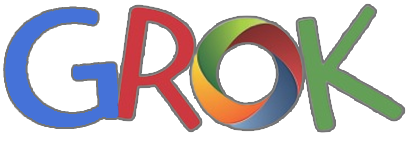Emotional literacy is a funny thing. It seems so simple, yet can feel so incredibly difficult at times. We certainly know we are feeling something, but the act of labeling and understanding those feelings is a different story. One way I’ve found clarity is to see things through the eyes of a child.
My 2 (and a half) year old Audrey talks incessantly. On top of that, all of her sentences seem to start with the phrase “I want ______”. Classic ‘terrific twos’.
It’s like she’s been waiting her whole life to say whatever is on her mind, followed by demanding whatever she wants. And, as my mother kindly reminds me, she has indeed been waiting her whole life. She just didn’t have the vocabulary; until now.
Parenting is funny that way. You encourage and coax your child to learn new words, and then you complain that they just won’t stop talking.
One way I have been broadening Audrey’s vocabulary is through our Kids GROK card games, a set of 54 illustrated feelings and needs cards with a guidebook for many ways to play. While they are recommended for kids 3 and up, Audrey has been “playing” with them ever since she could hold them in her hand. I’ve loved watching the evolution of her nibbling on the cards as a drooling one-year-old to actually recognizing the emotions of the bears.
One game she enjoys is laying out all of the Feelings cards on the floor and acting them out. Her angry bear face is spot on. What’s impressed me is not simply her ability to act out emotions, but how she can identify them as well.
Yesterday at the dentist, Audrey and I were both feeling disturbed by the screams and cries of the child having dental work done in the chair next to her. We’re both highly sensitive people (shout out to my fellow HSPs), and it was uncomfortable, even painful, to bear witness to these cries.
Fortunately, the dentist completed his work, and the child left.
My daughter looked at me, clutched her bunny tightly, and with tears in her eyes said “Mama, I’m scared. I wanna go home.” Instead of saying “Don’t be scared, you’re fine!”, I told her “Yeah, I understand. That was kind of scary. You can sit on my lap, and we can wait until you’re ready.”
Once I could sense her nervous system calming down, I asked her if she wanted to feel the toothbrush they were going to use, and pick out the flavor of toothpaste. She even asked to smell it. We asked the dental hygienist if her bunny could get his teeth brushed first (all two of them), and then it would be Audrey’s turn.
Audrey left the office with sparkling teeth, and I left brimming with pride for my daughter. That night at the dinner table, Audrey was telling her dad about the dentist, and I asked her, “do you remember telling me you were scared?”.
With the eve- defiant tone of a toddler, she said, “I was nervous.”
I chuckled a bit that she chose a different word for her emotions, but I was also impressed she could differentiate multiple feelings. When was the last time you heard a 2-year-old say she was nervous?
Heck, when was the last time you heard someone say how they were truly feeling?
A simple card game, what seems like just a game of charades to her, is teaching her to name emotions, and deepening her connection to the emotions she feels.
Why is it important and valuable to help our children identify their emotions? One answer is that naming them can diffuse their charge and matching the need connected to the feeling can make it dissipate all together.
A playful little way of saying this is “name it to tame it.”
Labeling feelings, and using that connection to “tame” them isn’t just for kids either. So many of us throughout our lives have been taught to ignore our emotions, not to name our feelings and in so doing burden others with their presence.
Emotional literacy, the simple act of naming our emotions, is the first step in undoing that conditioning and truly connecting with what we feel.
So take a lesson from a 2-year-old and name it to tame it!
Oh sorry, two and a half…



Thank you for this wonderful article! Emotional literacy and building emotional intelligence in children is vital for self regulation and self esteem. It also builds connection and strengthens relationships between parents, caregivers and children. It is a life long communication skill for all ages. As a licensed clinical social worker and therapist, I am passionate about this topic and wrote the parenting/children’s book, “What I Really Want to Hear,” for grown-ups and children to read together and learn together. Here is a link if you would like more information.
https://www.amazon.com/What-Really-Want-Hear-collection-ebook/dp/B09QLD6QGL/ref=sr_1_1?crid=JSXPGPBEC723&keywords=what+i+really+want+to+hear&qid=1646285536&s=digital-text&sprefix=what+i+really+want+to+hear%2Cdigital-text%2C57&sr=1-1